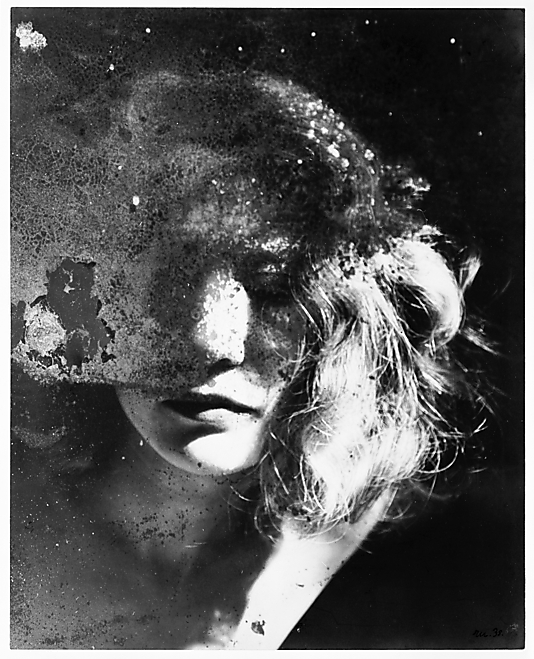I really love the effect of the what I shall call the ‘decaying’ mirror in Raul Ubac’s photo portrait. Daido Moriyama applies a similar technique in his self-portraits using reflective surfaces. The erasure/disclosure of the image plays with the solidity of ‘identity’ as a knowable concept. Here, the woman’s head seems to emerge from water, the neck visible below a filmy surface. The bright dots suggest astronomical constellations. The eyes closed, or cast downwards, the face withdraws from the viewer; the filmy, cracked ‘overlay’ removes the subject further accentuating the construction process of the print. The distancing plays with the ‘present’ moment of the photograph, wrapping the female face in a temporal indeterminacy, the patina suggestive of damaged nostalgic snapshot keepsakes from the turn of the nineteenth century. The woman herself, is positioned indeterminately, submerged in the dreamy water of sleep, or imaginative revelry. Significantly, Ubac’s portrait is the image used for the cover of Rosalind Krauss’s The Optical Unconscious, a book which proposes an alternative history of modernist art. Krauss’s book discusses art (such as that by Ubac and Ernst) as the unconscious ‘side’ of modernism, of art detached from the socio- economic, of more radical, fantastic works representing a shifting reality.
The Metropolitan Museum of Art – Portrait Dans un Miroir
Leave a reply

